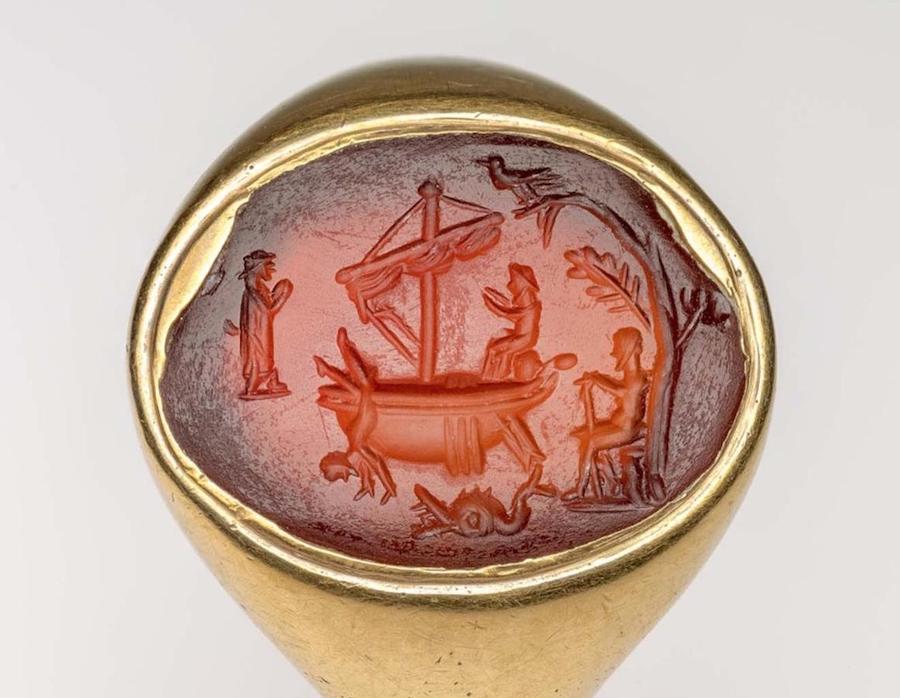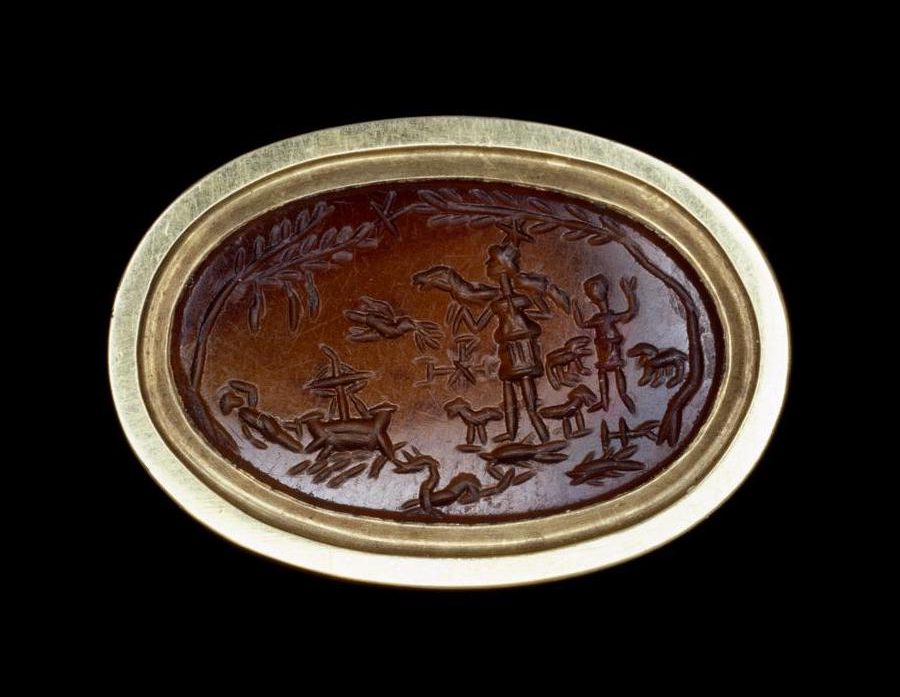
Not a Friend of ASOR yet? Sign up here to receive ANE Today in your inbox weekly!

March 2024
Vol. 12, No. 3
A Minor Biblical Prophet Lives Again—Among the Dead
By Amy Erickson
In the catacombs beneath the city of Rome, where the dead were interred, honored, and visited, Jonah is strikingly alive. On the walls, the ceilings, and between the niches (loculi) built to accommodate bones, Jonah is simply but boldly painted, each scene in the story circumscribed by thick red and green lines. His image is the most popular biblical subject in early Christian funerary art, appearing some one hundred times by the middle to late Constantinian period.
This raises a perhaps obvious question: why? The story of Jonah is but a blip in the context of the Hebrew Bible, a few lines in a vast collection of texts, and as a prophet, he has the thinnest of credentials. Among contemporary Bible readers, he is best known for blatantly trying to shirk his prophetic duty. So what made Jonah so popular in the catacombs?
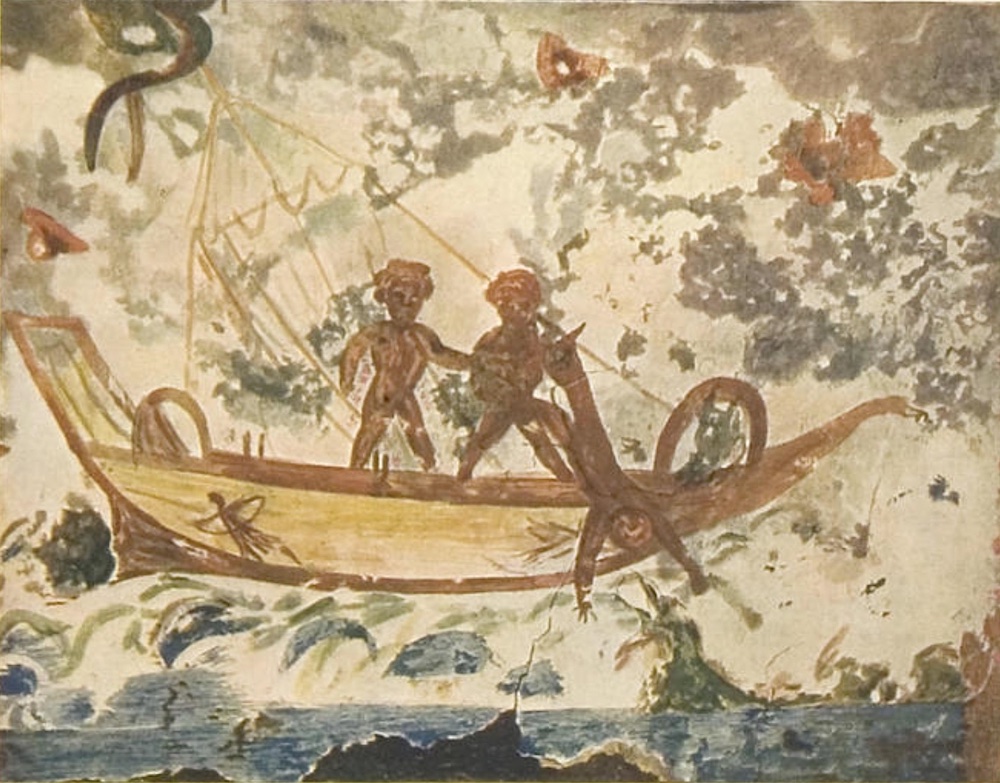
In my work, I argue that Jonah’s popularity is rooted in the images’ status as a “boundary object”. A boundary object is a theoretical concept used to describe objects, ideas, or information that belong to multiple social worlds simultaneously. Such objects are adaptable enough to respond to diverse parties’ needs and constraints, but also robust enough to sustain a common identity and perpetuate continuity with tradition. For Romans, with their protean and overlapping social, familial, and religious identities and deep-seated reverence for tradition, Jonah served as a powerful means of expressing beliefs, informing practices, and sustaining rituals related to death and the afterlife.
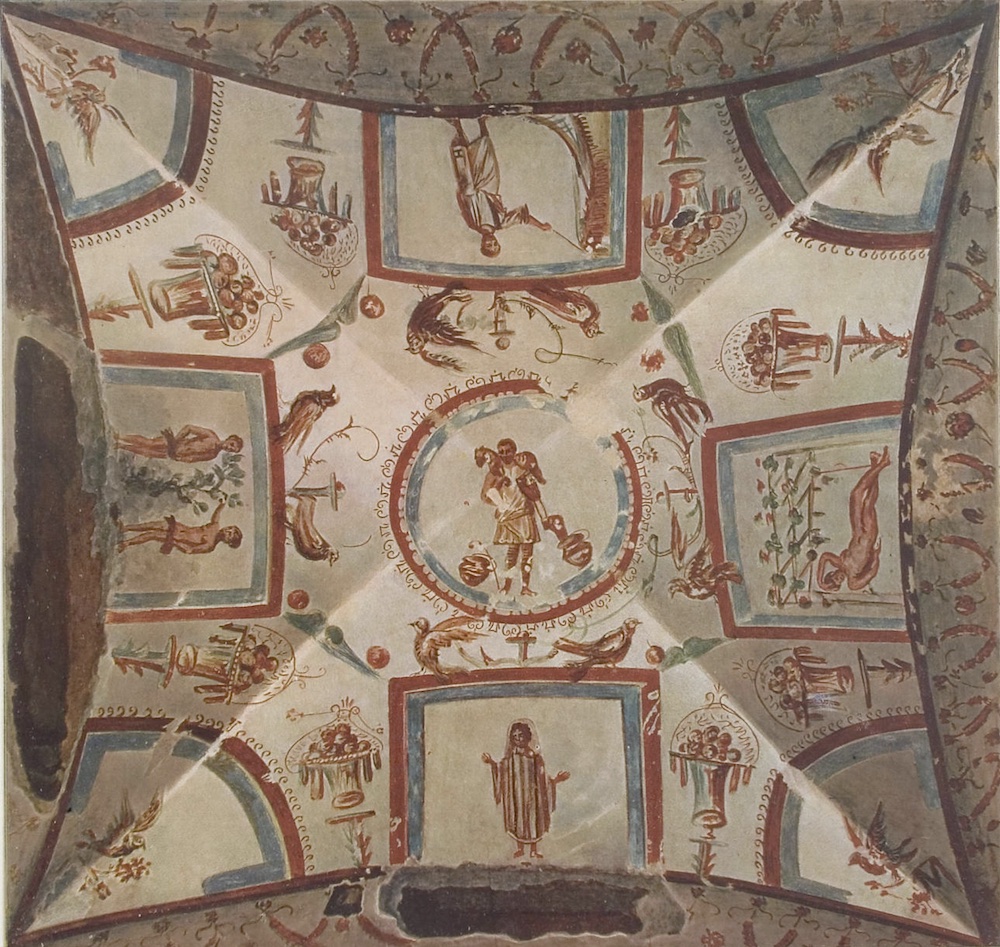
Many scholarly understandings of Jonah’s significance in early Christian art emerge from the conception of Christianity as primarily a belief system. My proposal does not challenge these traditional explanations but expands them. As a type of Christ, Jonah represented a particularly Christian hope for the afterlife among early Christians. Two motifs that were important to early Christians are evident in the basic artistic rendering of the narrative: 1) Jonah’s three days and three nights in the belly of the fish, which parallels Christ’s three days in the tomb (Matt 12:40); and 2) Jonah delivered from the fish belly and lying in repose under the vine. Jonah’s movement from death (or near-death) to a blissful Edenic moment is a typological depiction of Christ’s death and resurrection.
That Jonah represents a particularly Christian belief about the afterlife is surely true. However, among early Christians, beliefs about the afterlife were far from uniform. What was consistent were practices that involved the dead. In the first centuries of the Common Era and across Jewish, Christian, and Roman lines — lines that were porous to begin with — mortuary rituals were relatively constant.
This observation leads us into the study of lived religion to consider Jonah’s significance among the dead and among the living who sought to communicate with and honor the dead. Lived religion or ordinary Christianity focuses on the everyday experience of non-specialists engaging in acts of communication and social exchange with gods and other transcendent agents.
Mortuary Rituals and Ritual-Centered Visuality
Mortuary rituals suggest that the dead are, in a way, alive now. While they certainly are not alive in the same way that living people are, they are socially relevant beings. The spatial-ritual context enables the living and the dead to communicate and those practices, performed in the dark spaces of the underground burial chambers, affect what the images can do and become.
Rituals of commemoration were embedded in annual festivals of the dead and on the deceased’s day of death. During these rituals, families and friends would gather to eat and drink at the graveside and make offerings of oil and wine to their deceased ancestors. These offerings functioned like sacrifices and worked to maintain mutually beneficial relations between the living and the dead. According to the logic of social exchange and reciprocity, the dead, like the gods and other transcendent beings, were seen as interested parties when it came to the lives of the living.
Within this context of ritualized actions designed to facilitate interaction and exchange between the living and the dead, images become highly charged, even agentive. Jas Elsner argues that the person or the god represented in the image could, through ritual, come to inhabit the form and interact with the viewer. Encountered through a ritual gaze, the Jonah images were infused with and were capable of emanating power — power associated with supernatural realms and accessible in liminal spaces.
Magic
Much of the magic one can perceive in the material remains is apotropaic — that is, writing, imagery, and other artifacts intended to ward off the more frightening forces lurking within the catacombs and to protect the dead as well as the living.
Although most of the magical material, such as graffiti, amulets, and other grave goods, was removed from the catacombs during haphazard excavations and looting, some artifacts presumed to be amulets were retrieved and now reside in the Vatican collection of catacomb small finds. One such amulet is carved in the form of an ivory ship with Jonah being lobbed overboard, inscribed with the Greek, Eusebii zēseis! (‘Eusebius, may you live!’; inv 62588 in the Vatican collection). Rings inset with gems carved with images of Jonah have also been recovered.
That said, art with apotropaic function was not restricted to small artifacts. In Christian as well as Jewish catacombs, images and words were inscribed on or around the loculus closing of graves to protect the dead from demonic interference. The images of Jonah, which surrounded the bodies and bones of the dead (on loculi, large niches for inhumation burials lining the walls of the chambers) with images of a man’s release from the maw of a sea monster, a representation of death/evil, likely served as a form of benevolent protection for the dead.
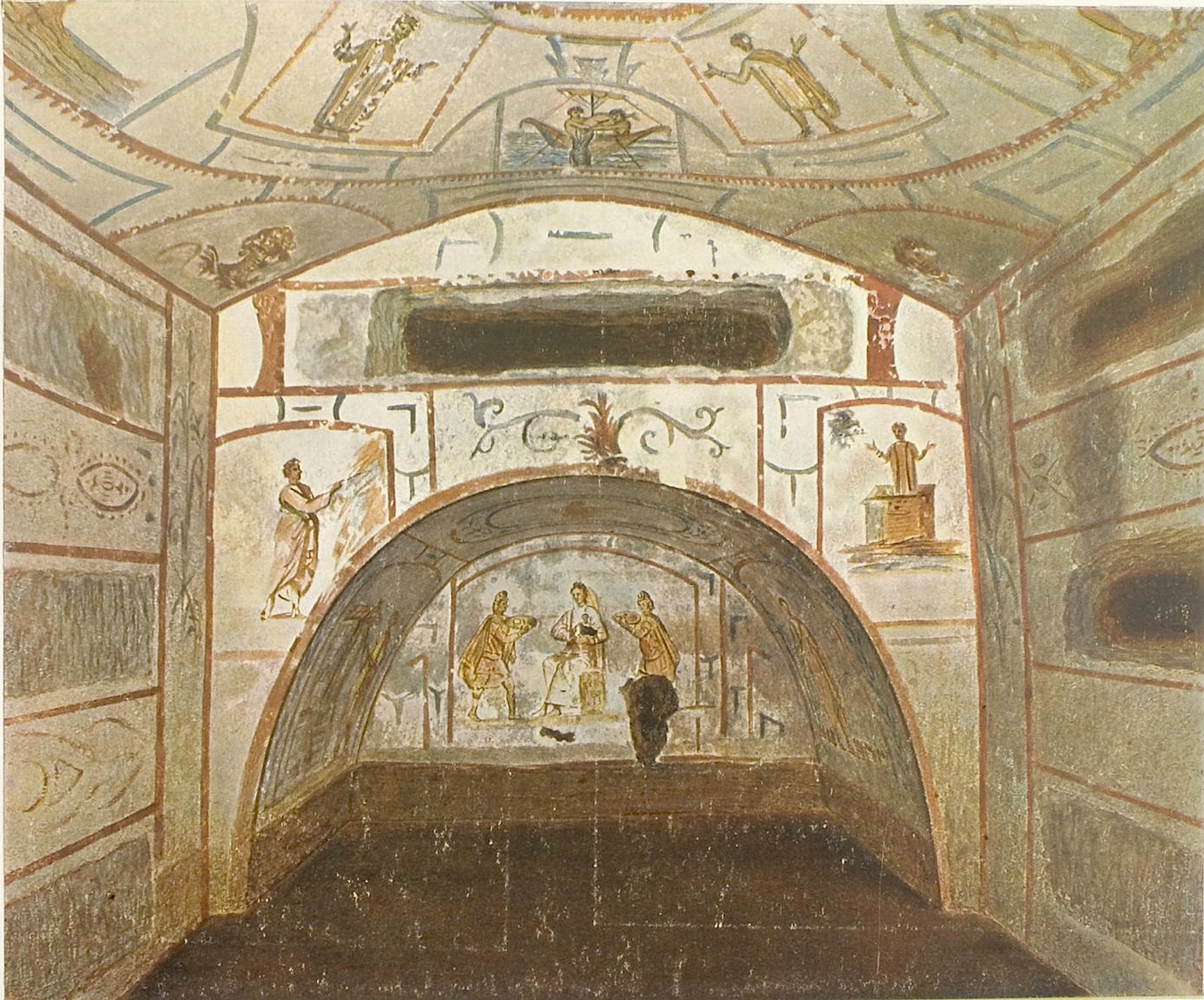
The living also stood to benefit from both their dead kin and heroic figures from tradition. The dead, ordinary and extraordinary, could dispense good luck and oracles among the living. Ritually enlivened, Jonah’s presence amplifies the potent environment of social exchange. As an ancestor and a hero, Jonah would have been seen as one of the powerful dead to be worshipped and gifted so as to channel blessings to worshippers.
Finally, when viewed through the lens of Christian martyrdom, Jonah’s harrowing sojourn in the belly of the ketos appears as an intense spiritual training or testing ground, something to be boldly confronted rather than merely feared. But again, the images do not simply represent trust and confidence; they are haptic — a term that refers to art experienced by the body in motion — in that they depict Jonah’s body as surrendering and submitting to death, embodying a posture of trust even when all appears dark and hopeless. Through Jonah’s raising of his hands, gliding into the mouth of the ketos, and reclining, the bodies of the mourners are coaxed to perform bodily what we might consider to be an exclusively internal attitude of faith. Jonah’s fluid acceptance of displacement, death, and pain leads to peace and rest in paradise.
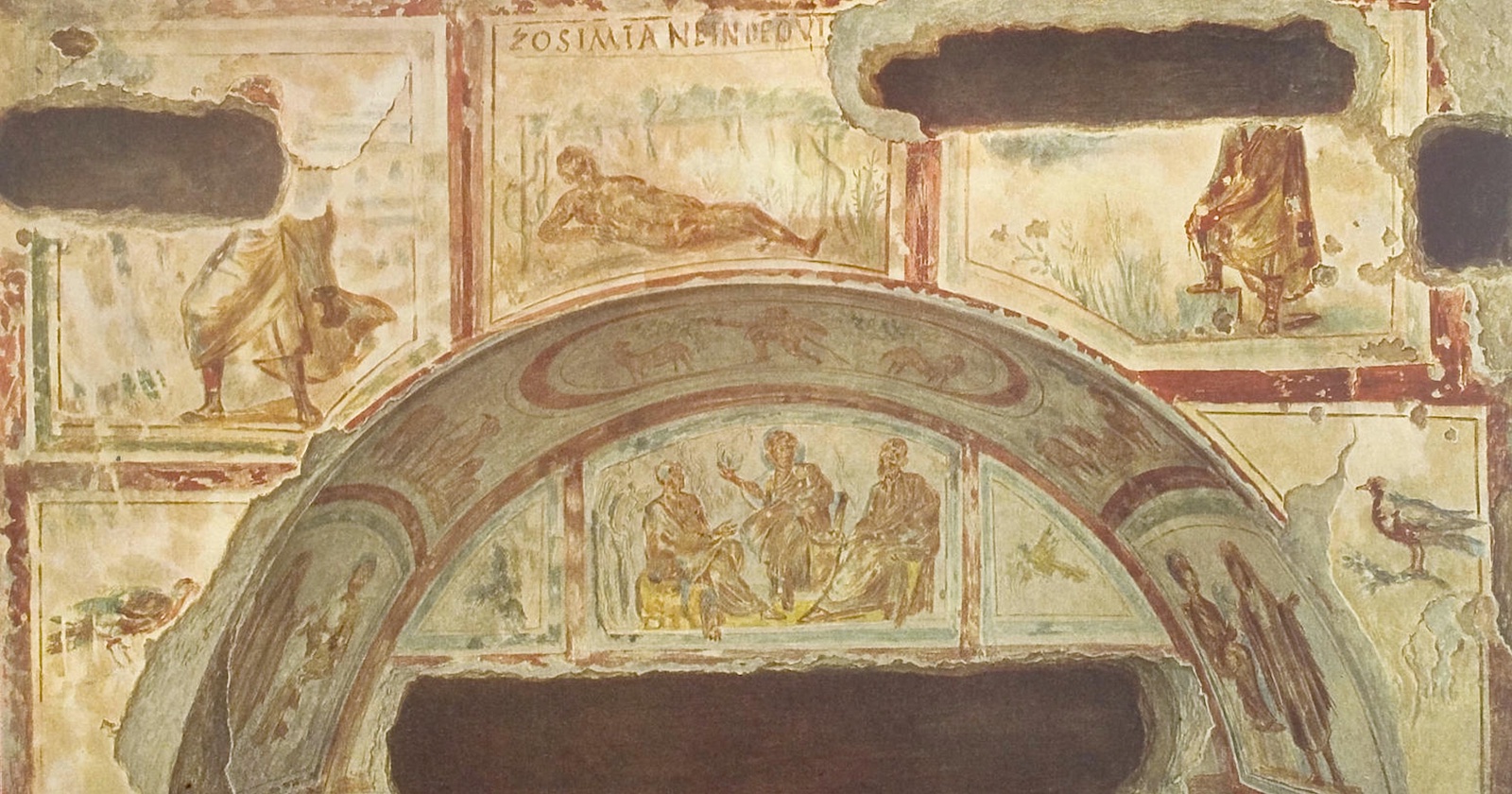
In sum, Jonah does not just represent a good death. His presence — as a source of protection for the dead and blessings for the living and as a haptic guide for embodying a martyr’s confidence in the face of struggle and death — becomes available in and through both the image and the performances of the mortuary rituals.
The Biblical Jonah
While the images of Jonah in the catacombs may seem only loosely connected to the book of Jonah as it appears in the Masoretic Text, there are some intriguing parallels between the book and the images. In Jonah 2, both the prose (Jon 1:17-1; 2:10) and the poetry (Jon 2:2-9) are dense with mythopoetic images that parallel those that inform the mortuary rituals and the visual-spatial language of the catacombs. Being swallowed by a big fish and taken into his belly or innards recalls myths of the great swallower, Mot (Death), a Canaanite deity whose imagery informs visions of death in the Tanakh. The psalm uttered by the character Jonah (Jon 2:2–10) features him going down into the underground sea and to the gates of the underworld. At the center of the poem (2:7), God brings him up and Jonah’s prayer enters the Temple, where he ritually performs his gratitude to God for his rescue. Finally, he is vomited out from the fish, returned to the land of the living, even “resurrected”. The psalm’s movement from death to life and the anticipation of a transformed life, achieved through a death — real or metaphorical — parallels the views and practices around death that we find in the catacombs.
Amy Erickson is Professor of Hebrew Bible at Iliff School of Theology. Her article, “Jonah in the Catacombs: Text, Ritual, and Magic in the Presence of a Biblical Prophet” recently appeared in the journal Die Bibel in der Kunst.
Further Reading:
Elsner, J. 2007. Roman Eyes: Visuality & Subjectivity in Art & Text. Princeton: Princeton University Press, 2007.
Erickson, A. 2022. Jonah in the Catacombs: Text, Ritual, and Magic in the Presence of a Biblical Prophet. Die Bibel in der Kunst (BiKu) / Bible in the Arts (BiA). Online-Zeitschrift 6: 1-27.
Erickson, A. 2021 Jonah: Introduction and Commentary. Illuminations Series. Wm. B. Eerdmans.
Stern, K.B. 2013. Graffiti as Gift: Mortuary and Devotional Graffiti in the Late Ancient Levant. In The Gift in Antiquity, ed. by M. L. Satlow. Wiley-Blackwell, 137–157.
Stowers, Stanley. 2011. The Religion of Plant and Animal Offerings Versus the Religion of Meanings, Essences, and Textual Mysteries. In Ancient Mediterranean Sacrifice. Edited by J. W. Knust and Z. Vμrhelyi. Oxford University Press, 35–56.
How to cite this page:
Erickson, A. 2024. A Minor Biblical Prophet Lives Again — Among the Dead. The Ancient Near East Today 12.3. Accessed at: www.asor.org/anetoday/2024/03/minor-biblical-prophet.
Want To Learn More?
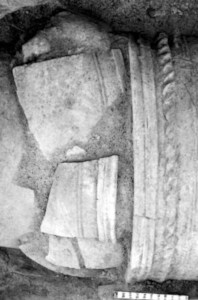 Death as a Stage for Performing Identity in the Assyrian Empire
Death as a Stage for Performing Identity in the Assyrian Empire
By Petra M. Creamer
The Assyrian Empire brought significant changes to the lives of its inhabitants. What can burial practices tell us about the power of an empire over its subjects? Read More

A Girl’s Helping Hand on the Journey to the Afterlife: Alabaster Ishtar-Aphrodite Figurines from Seleucid-Parthian Babylonia
By Stephanie M. Langin-Hooper
Few artworks from Babylonia in the Seleucid/Parthian period are as admired as the alabaster goddess figurines. Who do they represent and what were they used for? Read More
